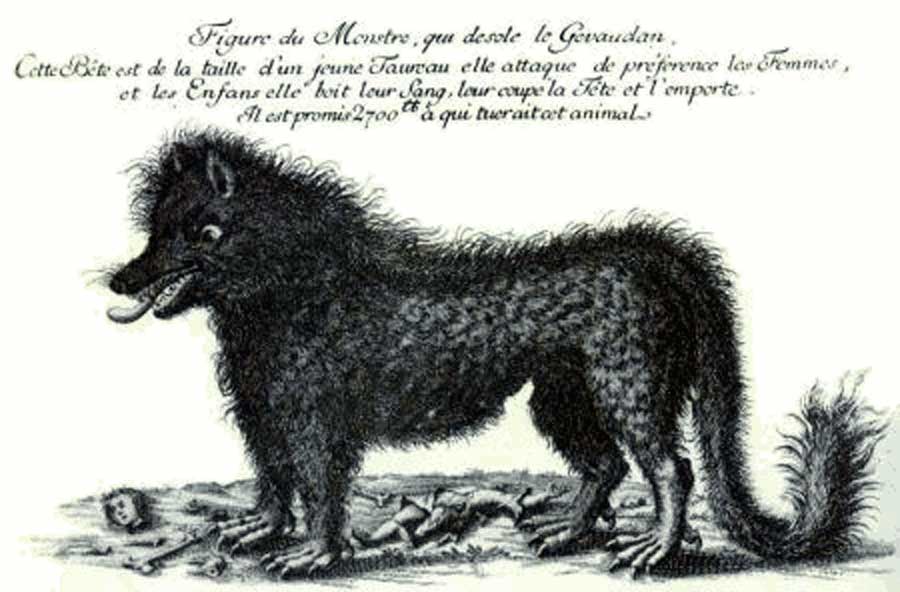Remember the large cat that was spotted and photographed near the French town of Montevrain, not far from the fantastical landscapes of Paris and French Disneyland? French authorities have assured a nervous public that the unidentified cat is “not a Tiger.” Nonetheless, the creature’s weight was estimated as at least 100 pounds, based on the size and depth of its visible tracks.
This particular feline joins a long tradition of mysterious beasts slinking through French history and folklore. The best known is the “Beast of Gévaudan,” which killed at least 60 people (statistics vary) between 1764 and 1767 near the Margeride Mountains in France’s isolated Massif Central region. In her essay “Appearances of Beasts and Mystery-Cats in France” in the journal Folklore, Véronique Campion-Vincent relates that “The notorious Gévaudan beast is not forgotten today…it is always alluded to when an unusual animal appears…is evocative of a past forever gone, and its absence is felt as a cultural gap.” Campion-Vincent tells us, “The sighting of an unclassified beast is “an exceptional event” that “reactivates a whole set of stereotyped tales of encounters with exceptional, abnormal animals. These tales set in present times feed upon a past which still seems close.”







